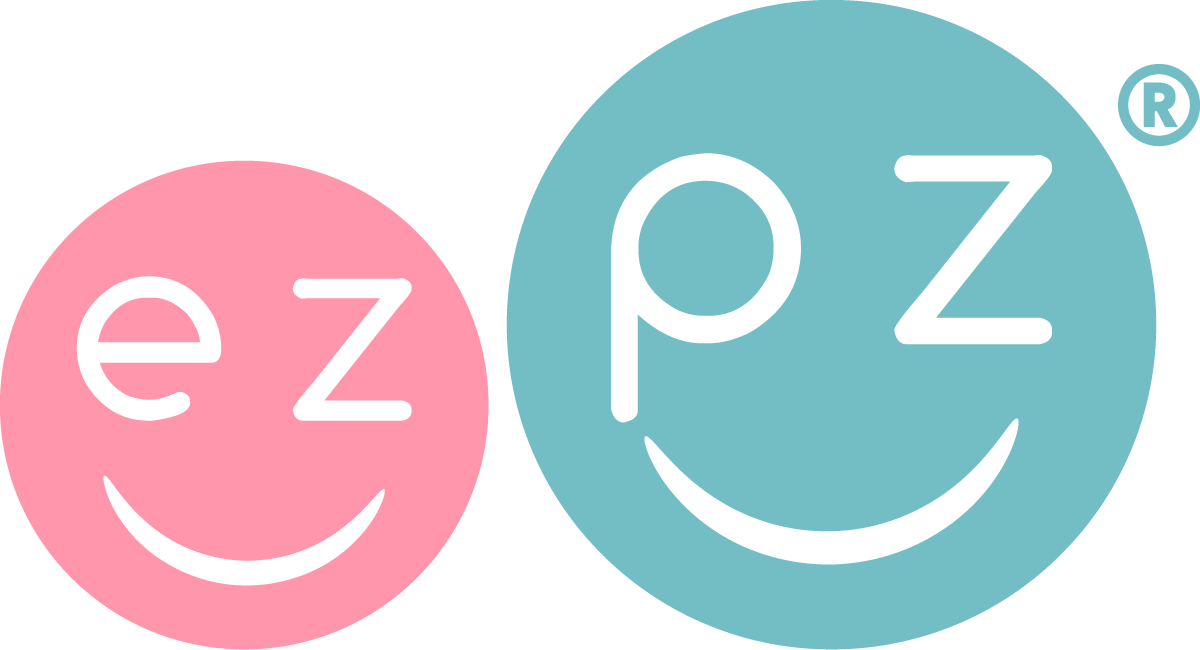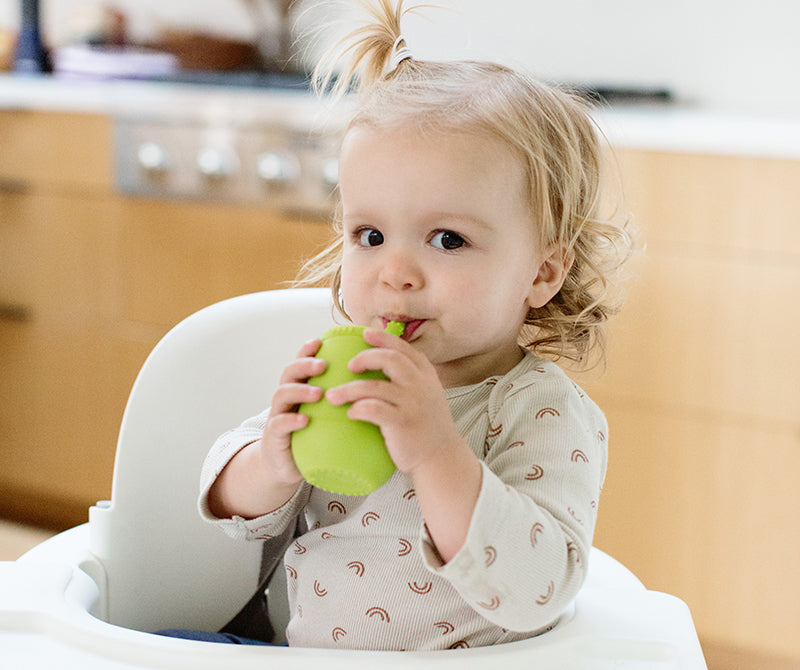Every parent has to choose what type of cup they are going to use with their baby or toddler. However, most families aren’t aware that their choice can affect their child’s oral motor development. There are so many cup options in the market, it's hard for parents to determine which one is the right choice for their family. Here are a few developmental tips to consider when choosing between a sippy cup and a straw cup.
Lip Development: To decrease drooling or liquids escaping the mouth (and covering a clean shirt) your child needs to have an adequate lip seal. With an adequate lip seal both the upper lip and lower lip are able to contract.
- Lips with a Straw: A straw improves lip rounding, which is an essential movement for drinking and swallowing (and also for speech and language development!). The ezpz Mini Cup and Straw Training System (for infants + young toddlers) and the Happy Cup and Straw System (for older toddlers + preschoolers) have sensory bumps on the training straw. This important design feature provides tactile input to help children understand (and feel) precisely where their lips need to be placed for age-appropriate swallowing.
- Lips with a Sippy cup: Most sippy cups promote an open-mouth, relaxed lip posture, which may negatively affect a child’s breathing, dentition, sleep and speech development.
Tongue Development: Another essential movement is for the tongue to retract and elevate to the roof of the mouth. This is considered a mature and safe swallow when drinking. As you read this, swallow your saliva. Did you feel your tongue touching the roof of your mouth? Yes – that is exactly the mature swallow pattern we want our 6-month-old babies and toddlers to do!
- Tongue with a Straw: A straw improves tongue elevation and oral motor coordination. These movements help to improve your child’s swallowing skills and promote an appropriate resting position of the tongue.
- Tongue with a Sippy Cup: A sippy cup encourages a tongue thrusting position, which is contraindicated – especially when we are trying to safely feed babies. One of the signs of readiness for starting solids is for the baby to not have an active tongue thrust. This is why sippy cup use can delay starting solids. It can also make mealtime frustrating, too! Imagine watching your baby push out all the food with their tongue instead of actually swallowing it. Gasp!
Teeth Development: Teeth are not needed in order to drink safely. However, a parent's cup choice can impact the function, stability and development of a child’s teeth.
- Teeth with a Straw: Keeping the lips toward the front of the straw is key for protecting teeth alignment. Proper lip placement will decrease tongue suckling and avoid any pressure that could negatively impact teeth development.
- Teeth with a Sippy Cup: Constant sippy cup use may lead to dental and speech issues. This is due to the tongue being placed in a forward position, which puts pressure on the upper teeth. This may cause the teeth to move forward and outward (i.e., misshape the oral cavity), which may lead to speech delays and difficulties chewing. If your baby or toddler swallows food whole, this may be one of the reasons why.
In summary, a straw cup can help improve your child’s oral motor abilities, which are needed for advanced speech and feeding skills. If you feel your family is unable to ditch the sippy cup entirely, consider decreasing its daily use. And if you switch to our Mini Cup and Straw Training System, please tag us in your pics so we can share your straw success stories! #ezpzfun #MiniStraw.



